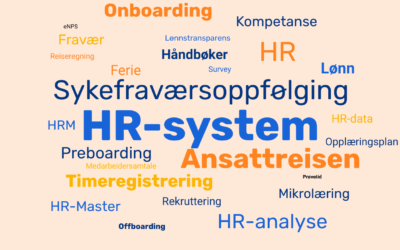What should an employee handbook contain?

This is what an employee handbook should contain
The employee handbook is an excellent reference tool for all employees in a business. Managers can refer to the employee handbook for trivial questions, where the employee can become more self-reliant.
A good employee handbook is written to ensure good personnel policies and procedures.
The handbook must contain a complete overview of each employee's duties and rights related to the employment relationship.
By customizing an employee handbook for your business, employees will be able to easily find answers to questions about your company's internal rules and practices.
As a supplement to the employment contract
A staff handbook is a good supplement to the employment contract. The employment contract is at the individual level, while the employee handbook is at the overall level and can be overridden by the employment contract.
The handbook is also a good guide for the manager in personnel policy and helps the individual manager to treat employees equally.
In other words, there are many topics that an employee handbook should cover, but below we have gathered the topics we believe are most important and interesting for employees and employers.
Note that the handbook should also function as a guide for the manager, where the manager can use the handbook as leadership support, where it can contribute to good leadership.
Work regulations
Thorough and clear work regulations are important in a company. In fact, for many, they are required by law.
The work regulations must apply to all employees who are not in a managerial or supervisory position, and breaches of the regulations can potentially be grounds for dismissal.
The purpose of work regulations is to act as a guide for employees, providing information about the requirements and expectations the company has for the employment relationship.
A typical work regulation should include:
- Rules for working hours and rest periods in the company
- Date for payment of salary
- Order
- Prohibition of the use of alcohol and drugs
- Rules for the use of social media
- Holiday regulations, e.g. deadline for application
- Any duty of confidentiality
There is also a requirement that the content of the work regulations is made known to the employees in an appropriate manner. An employee handbook would therefore be a natural place to keep the work regulations.
Working hours
The law defines a number of rules for the length and distribution of working hours throughout the day. However, many companies have their own provisions in, for example, collective agreements or employment contracts that it is appropriate to write about in an employee handbook.
Employees often have questions regarding different working time arrangements in the company, such as holidays, which is a good idea to clarify in a handbook.
"Do I get time off on Christmas Eve, and what about Christmas Day?", "Do I work until 12 noon or 1 pm the day before Maundy Thursday?" or "When is Christmas, Whitsun and Easter Eve considered a public holiday?".
These are questions that can easily be answered in an employee handbook and ensure that everyone in the company follows the same rules. The same applies to overtime rules, which often differ from company to company.
Disease
Illness is usually not something you plan for, and should an employee be affected by illness, it's great that they can quickly find out how to proceed.
Should I call my line manager? Is it enough to send a message? Do I have to register it somewhere? How many self-certification days am I actually entitled to, and when do I have to get sick leave? What is the follow-up in the event of long-term illness? All these questions and many more are common for employees to wonder about, but also for managers.
Just because you're a manager doesn't mean you're an expert on sick leave. That's why it's important that these things are clearly stated in an understandable way in the employee handbook.
What does the law say about sick leave and follow-up of employees on sick leave?
The same applies to sickness benefit rules. What are you actually entitled to? What is an employer period? What does it mean that I get a 6G salary?
Being able to read about this in a more informal and understandable way, as well as knowing what actually applies in your company and not just the law, can be worth its weight in gold for an employee, and can potentially make the period of illness easier to manage.
If you have children under the age of 12, you are also entitled to self-certification days for the child's illness. That's something that's good to know in an otherwise hectic workday.
It should be stated in the employee handbook how many days you are entitled to and how to proceed in these cases.
Pension and insurance schemes
Pensions and insurance are important topics for every employee. Some you are entitled to by law, while others are specific to the company.
The handbook must state how the company undertakes to set aside money in pension savings for you. It must state the type of pension scheme that applies in the company and which bank you are saving in.
This is information that is often handed out in connection with employment, but it is still good for the employee that the information is easily accessible.
In addition, it is common for employees to be covered by a number of insurance policies. For example, the employer is obliged to provide occupational injury insurance to cover losses, expenses and any compensation in the event of illness or injury incurred in the work context.
It is common for employees to be covered by insurance. Some insurances are mandatory for the employer to cover.
However, the company can also take out a number of other insurances with the employer in addition to what is required by law. For example, health insurance and/or travel insurance.
Information about these should be a natural part of the Employee Handbook.
Holiday
There are several topics related to vacation that should be defined and described in an employee handbook, as this is a topic that covers all employees. For example, it must be stated whether the company follows statutory holidays of 4 weeks and 1 day (21 working days) or has 5 weeks (25 working days) holiday.
It is also common for the timing of the main holiday to vary from company to company. According to the law, you are entitled to 3 weeks in the period June 1 - September 30, but other arrangements can be agreed.
For example, if the company is seasonal, with peak season in the summer, you can agree that the main holiday will be before or after the summer. This must be stated in the employee's agreement, but also in the employee handbook.
Rules for transferring holiday, advance holiday, holiday pay, how and when to apply for holiday and taking holiday in the event of illness, pregnancy or dismissal are also topics that interest employees and which they may not have familiarized themselves with until it is relevant.
Gathering such information in one place is very useful.
Leave of absence
As an employee of a company, you can apply for time off work on various occasions, this is what we call leave.
Some leave is legally entitled, while other leave is a benefit determined by the company.
There are also differences in how the leave is paid. Some will be covered by the employer (e.g. prenatal check-ups), others will be covered in full or in part by NAV (e.g. maternity leave) and some are unpaid.
It is therefore useful to use the Employee Handbook to describe which types of leave are paid and which are not, how long you are entitled to leave and how to apply for it.
Some of the leaves you are entitled to as an employee:
- Pregnancy control
- Maternity leave
- Care leave
- Maternity and parental leave
- Partial leave of absence
- Breastfeeding free
- Illness of children and childcare providers
- Educational leave
- Military service
- Public offices
- Religious holidays
Welfare leave
It is also common for companies to have what is known as welfare leave.
These are shorter leaves of absence (up to 3 days) and are mainly regulated by tariffs or internal agreements in the company.
Whether they are paid or not is also determined by the employer.
The handbook should state which types of welfare leave you can apply for, how many days are involved and whether they are paid or not.
Examples of welfare leave can be:
- Moving to a new home
- Entering into marriage
- Weaning in kindergarten
- Blood donation
- Session or military service
Termination of employment
An employment relationship is a contractual relationship, which means that the contract can be terminated for different reasons and in different ways. Either the employer can hand in a notice of termination or the employee can hand in a notice of termination.
When an employee submits his or her own resignation, little is required other than that it be submitted in writing, but there are still a number of requirements in connection with, for example, the notice period and payment of severance pay and the like that should appear in an employee handbook.
If an employer dismisses an employee, the requirements are far stricter.
Among other things, the dismissal must be objectively justified in the employee's, employer's or company's circumstances.
The employee can also demand negotiations and has the right to take legal action. These requirements and rights should be written in an employee handbook.
Dismissing an employee is far stricter than when an employee submits a resignation.
Both so that employees know what they can do, but also so that managers follow the guidelines and requirements set out in the law.
In the event of dismissal the employee must leave on the day.
This can only happen if the employee is guilty of a gross breach of duty or other material breach of the employment contract.
Apart from the fact that you are not entitled to work during the notice period, the same requirements for objectivity and formalities apply as in the case of an ordinary dismissal.
Other topics that should also be mentioned in the Employee Handbook
The topics you have now read above are the ones we believe are most important for employers, employees and managers, but there are also a number of other topics that should be mentioned.
- Privacy policy
- Possible tariff
- Employee benefits
- Salary and other compensation
- HSE (If you do not have a separate handbook for this topic)
- General guidelines e.g. when using the internet, social media etc.
- Guidelines regarding the employment relationship (vacancies, employment contract, probationary period, confidentiality, etc.)
In collaboration with Virke, we deliver 4human a carefully crafted content template for a personnel handbook.
Related posts
Traftec paves the way for smarter roads through structured Competence Management
In 2023, Traftec, Norway's leading electrical contractor, took a significant step towards a more digitalized everyday life by entering into an agreement...
HR glossary
Here are terms and abbreviations that you who work in HR should know – whether you are new to the profession or want a refresher. To...
HR courses
All companies that use 4human HRM should have subject matter experts with good expertise to ensure efficient operation of the system. Expertise in...


